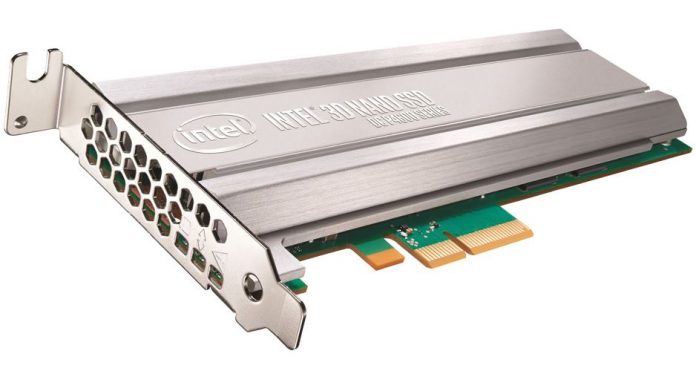We finally have the launch of the Intel DC P4600 and Intel DC P4500 NVMe SSDs today, a launch we have been anticipating for some time. These new 3D NAND based TLC SSDs mark a capacity boost for the Intel lineup. Furthermore, this is the first Intel generation we have seen, at launch, that is favoring the U.2 form factor over the add-in card (AIC) form factor. Even the recent Intel Optane launch, and the card that we used for testing, were AIC first. The NAND NVMe team certainly is seeing that with the next generation of Intel Xeon platform designs, U.2 will be more popular.
Intel DC P4600 Series NVMe Comparison
There are two AIC and three U.2 2.5″ form factor drives in the Intel DC P4600 launch series.

The highest capacity 4TB drives are only available in the AIC form factor. With larger capacity drives, DWPD becomes less of a factor. For a 100GB SSD, the prospect of writing 1TB/ day or 10 DWPD was tangible. With these larger capacity SSDs, there is a higher chance that some of the data will be static (if not the vast majority.) Writing even 8PB of data can be hard.
Intel DC P4500 Series NVMe Comparison
The Intel DC P4500 series NVMe SSDs are read focused. There is only one AIC offered, the 4TB model.

One can see that the drives have significantly lower write endurance and write speeds than the Intel DC P4600 series. Write speeds on the 1TB drives are measured at only 620MB/s sequential which is lower than we are accustomed to for most NVMe SSDs and nearing SATA SSD speeds.
Final Words
The Intel DC P3520 series has been a hit. Higher capacity, lower endurance drives service the majority of read-intensive workloads out there. Making a 7 or 10 DWPD 4TB general purpose NVMe drive makes little sense so we can understand why Intel is focused on adding capacity and lower endurance numbers with this generation. It is also a watershed moment since only 33% of the drives launched were AIC form factor. U.2 is set to have a big second half of 2017 as the Intel Xeon line sees its most dramatic change since 2011.





I am never excited with U2 drives. While it is fast, I do hope we will soon be able to forget it ever existed. I mean, we are going from very convenient hot-swap drive bays to the most inconvenient of all options, a socket built into the motherboard and potentially inacessible without first removing other components/PCIe cards. Not mentioning the fact that U2 is hard to cool and take a lot of motheboard space forcing us back to full ATX-sized mobos.
All SSD products being sold at the moment are in a form factor that I do not believe will be a good option a couple years from now. What do you think will be the “next SATA”?
U.2 drives are hot-swap. I think you are commenting on m.2.
There are 4 form factors, packaging designs going forward.
U.2 – 2.5 inch, hot swap, bay oriented, switch expandable, perfect for scaling lots of data in a single server machine.
AIC – The classic add-in card, great for a single or a few accelerators but not 10, or even 24 drives.
M.2 – the small form factor from the PC and mobile world, also good for low power storage options in servers
BGA – the smallest of packaging for embedded designs with NVM.
The reason Intel is providing mostly U.2 and AIC designs should be obvious, these are server NVMe drives after all, there is nothing different here than any other NVM drive manufacturer. The upcoming server platform from Intel is going to be very U.2 friendly. A good thing for the industry.
Cliff was correct in pointing out this change over and why NVMe and U.2 are now focused on becoming standard for use in very serviceable options of going from 1 to 24 U.2 drives in a single server machine. The beauty of a U.2 design is that it does support SATA, SAS, NVMe storage interfaces so you can have a lot of options.